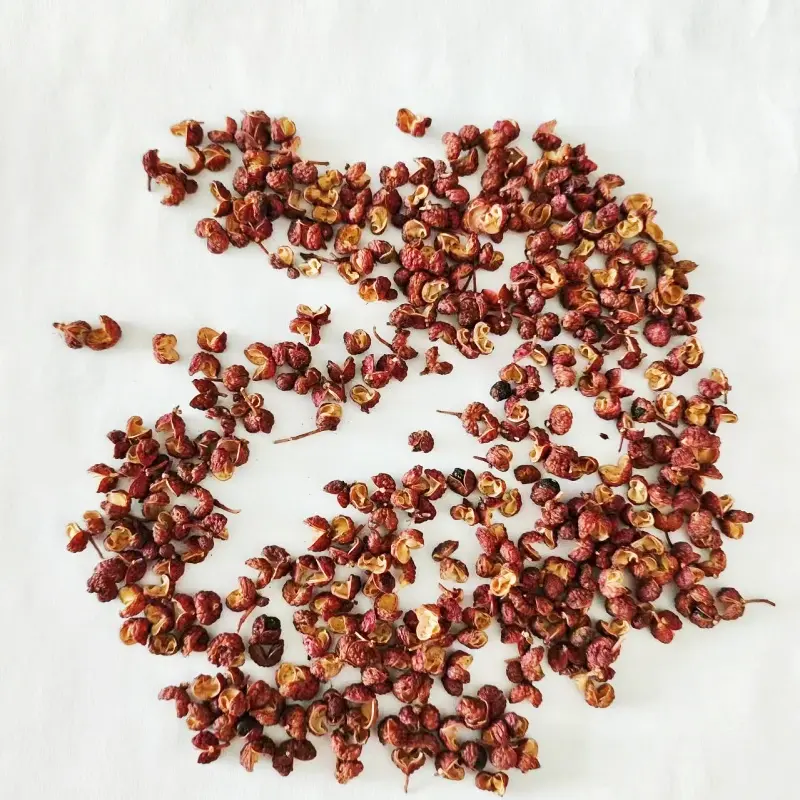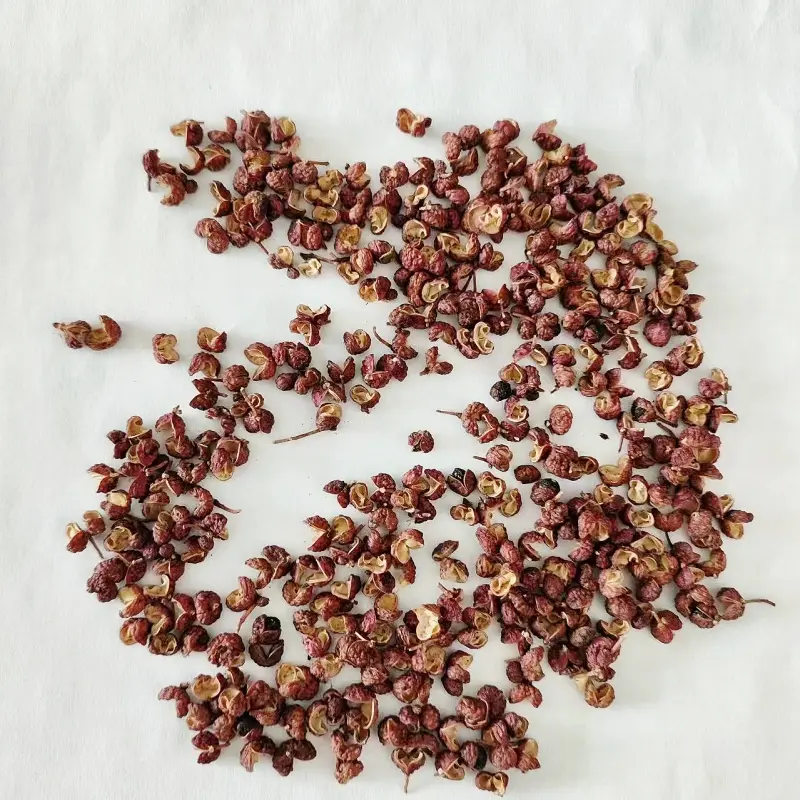Understanding the Myths and Realities
Prickly ash, also known as Sichuan pepper (Zanthoxylum), is a popular spice in Asian cuisine, particularly in Chinese and Japanese dishes. Known for its unique numbing and tingling sensation, prickly ash adds a distinctive flavor that is beloved by many. However, there's a common concern among consumers: Is prickly ash poisonous?
In this article, we'll delve into the nature of prickly ash, explore its potential risks and benefits, and clarify whether this spice poses any dangers to those who consume it. By the end, you'll have a comprehensive understanding of prickly ash and its place in your kitchen, along with a brief introduction to the high-quality Sichuan peppercorn products offered by Weifang Manna Foods Co., Ltd.
What is Prickly Ash?
Prickly ash refers to several species within the genus Zanthoxylum, but most commonly to Zanthoxylum piperitum and Zanthoxylum simulans. These plants are native to East Asia and are well-known for their aromatic seeds, which are used as a spice in various culinary traditions. The most famous variety is the Sichuan peppercorn, a staple in Sichuan cuisine, known for its ability to create a numbing sensation on the palate.
The "prickly" in prickly ash comes from the plant's appearance, as its branches are often covered in sharp thorns. The spice itself is derived from the husks of the seeds, which are dried and used in cooking. Despite its name, Sichuan peppercorn is not related to black pepper or chili peppers, but it shares some of their spicy qualities.
834450219.webp)
Is Prickly Ash Poisonous?
The short answer is no, prickly ash is not poisonous. However, like many other plants, it contains certain compounds that can be harmful if consumed in large quantities or by individuals with specific sensitivities. Let's break down the concerns:
Chemical Compounds in Prickly Ash:
Prickly ash contains various chemical compounds, including alkaloids, flavonoids, and volatile oils. Some of these, like hydroxy-alpha-sanshool, are responsible for the tingling and numbing sensation associated with the spice. These compounds are generally safe when consumed in the amounts typically used in cooking.
Potential Allergic Reactions:
Some people may be allergic to prickly ash or its compounds. Allergic reactions could include skin rashes, itching, or gastrointestinal discomfort. If you have a history of allergies to other spices, it's advisable to try prickly ash in small amounts initially.
Interaction with Medications:
Prickly ash has been traditionally used in herbal medicine, and like many herbs, it can interact with certain medications. For instance, it may affect blood clotting, so individuals on blood-thinning medications should consult a healthcare provider before consuming large amounts.
Oxalate Content:
Prickly ash contains oxalates, which can contribute to the formation of kidney stones in susceptible individuals. While the amount present in typical culinary use is unlikely to pose a risk, those with a history of kidney stones may want to moderate their intake.
Sichuan Peppercorn Be Stored to Maintain Its Freshness
Sichuan peppercorn is a delicate spice that requires proper storage to maintain its unique flavor and potency. Given its high content of volatile oils, which are responsible for the characteristic numbing sensation and aroma, improper storage can lead to a loss of flavor, potency, and even spoilage. Here’s how you can ensure that your Sichuan peppercorn remains fresh for as long as possible.
1. Understanding the Shelf Life of Sichuan Peppercorn
Sichuan peppercorn, when stored correctly, can last anywhere from one to two years. However, the potency of its flavor diminishes over time, especially if not stored properly. The spice’s longevity is primarily determined by how it is stored post-harvest. At Weifang Manna Foods Co., Ltd., our Sichuan peppercorns are processed and packaged under stringent conditions to maximize shelf life, ensuring that the product you receive is as fresh as possible.
2. Ideal Storage Conditions
To preserve the freshness of Sichuan peppercorn, it’s crucial to store it in an airtight container. This prevents exposure to air, which can lead to the oxidation of essential oils, resulting in a loss of flavor and potency. Containers made of glass or metal with tight-fitting lids are ideal for storage.
Keep the container in a cool, dark place away from direct sunlight and heat sources. The volatile oils in Sichuan peppercorn are sensitive to light and heat, which can accelerate their degradation. A pantry or cupboard away from the stove or oven is an excellent place to store your spice.
3. Avoiding Moisture and Humidity
Moisture is one of the biggest enemies of Sichuan peppercorn. Exposure to humidity can cause the spice to become moldy, which not only affects its flavor but also poses health risks. To prevent this, always ensure that the container is sealed properly after each use.
If you live in a particularly humid climate, consider adding a food-grade silica gel packet to the container. These packets absorb excess moisture, helping to keep your Sichuan peppercorn dry and free from mold.
4. Storing Ground vs. Whole Peppercorns
There’s a significant difference in the storage needs of whole Sichuan peppercorns compared to ground peppercorns. Whole peppercorns have a longer shelf life because the essential oils are contained within the husk. Ground peppercorns, on the other hand, lose their flavor more quickly due to increased surface area exposure.
For this reason, it’s advisable to buy whole Sichuan peppercorns and grind them as needed. At Weifang Manna Foods Co., Ltd., we offer both whole and ground options, but we recommend whole peppercorns for those who want to maintain the spice’s maximum freshness.
5. Freezing Sichuan Peppercorn
For extended storage, Sichuan peppercorn can be frozen. Place the peppercorns in a vacuum-sealed bag or an airtight container and store them in the freezer. Freezing helps preserve the volatile oils and keeps the spice fresh for up to two years. When you’re ready to use them, allow the peppercorns to come to room temperature before opening the container to avoid condensation.
6. Signs of Spoilage
Despite best efforts, spices do not last indefinitely. It’s important to recognize the signs of spoilage in Sichuan peppercorn. If the spice has lost its aroma, flavor, or color, it’s likely past its prime. Mold or an off smell are also clear indicators that the peppercorns should be discarded.
In summary, proper storage is key to maintaining the freshness and potency of Sichuan peppercorn. By following these guidelines, you can ensure that your spice retains its unique flavor and numbing sensation, enhancing your culinary creations for months to come. At Weifang Manna Foods Co., Ltd., we take great care in the processing and packaging of our Sichuan peppercorns to ensure they arrive at your kitchen as fresh as possible, ready to deliver the authentic taste of Sichuan cuisine.
Health Benefits of Prickly Ash
Sichuan peppercorn, also known as prickly ash, is more than just a culinary delight; it's a spice with a rich history in traditional medicine and modern health applications. Understanding its health benefits can help you appreciate this unique spice beyond its flavor.
1. Digestive Health
One of the primary benefits of Sichuan peppercorn lies in its ability to aid digestion. The active compound hydroxy-alpha-sanshool stimulates the production of digestive enzymes, helping to break down food more efficiently. This can be particularly beneficial for those suffering from indigestion, bloating, or other gastrointestinal issues.
A study conducted by the Journal of Ethnopharmacology highlighted that the compound’s mild irritant effect on the digestive tract can actually stimulate the release of gastric juices, promoting better digestion and nutrient absorption. For those who regularly experience discomfort after meals, incorporating Sichuan peppercorn into their diet may provide relief.
2. Anti-Inflammatory Properties
Inflammation is at the root of many chronic diseases, including arthritis, heart disease, and even cancer. Sichuan peppercorn contains antioxidants like quercetin and rutin, which have been shown to reduce inflammation in the body. These compounds help neutralize free radicals, preventing cellular damage and reducing the risk of chronic disease.
Research published in the journal Phytotherapy Research demonstrated that the anti-inflammatory properties of Sichuan peppercorn could help manage symptoms of arthritis and other inflammatory conditions. By reducing inflammation, this spice may also play a role in lowering the risk of heart disease and improving overall cardiovascular health.
3. Pain Relief and Numbing Effects
In traditional Chinese medicine, Sichuan peppercorn has long been used as a natural pain reliever. The numbing sensation it produces, due to hydroxy-alpha-sanshool, can help alleviate various types of pain, particularly toothaches and rheumatism. This numbing effect works by blocking nerve signals that transmit pain sensations, providing temporary relief without the side effects of conventional painkillers.
A case study in the Journal of Traditional and Complementary Medicine illustrated how topical application of Sichuan peppercorn oil could reduce pain in patients with chronic joint pain. While more research is needed, the initial findings suggest that Sichuan peppercorn could be a valuable addition to pain management therapies.
4. Antimicrobial and Antifungal Properties
Sichuan peppercorn also possesses antimicrobial and antifungal properties, making it a potential natural preservative. The spice’s ability to inhibit the growth of certain bacteria and fungi has been documented in studies such as those published in the Journal of Food Science and Technology. This makes it not only a flavorful addition to dishes but also a potentially protective one.
For individuals concerned about food safety, incorporating Sichuan peppercorn into meals may reduce the risk of foodborne illnesses. This property is particularly beneficial in regions where food preservation methods may not always meet modern standards.
5. Cardiovascular Benefits
Emerging research suggests that Sichuan peppercorn may also benefit cardiovascular health. The spice has been shown to improve blood circulation and reduce blood pressure in some studies. Its ability to dilate blood vessels and promote better blood flow can help prevent conditions like hypertension, which is a significant risk factor for heart disease.
In conclusion, Sichuan peppercorn is more than just a spice; it’s a powerhouse of health benefits. From aiding digestion and reducing inflammation to providing natural pain relief and antimicrobial protection, this spice deserves a place in your pantry not just for its flavor, but for its potential health advantages. Weifang Manna Foods Co., Ltd. offers the highest quality Sichuan peppercorns, processed with care to preserve these health benefits, making it a valuable addition to any diet.

Sichuan Peppercorn Be Used in Cooking
Sichuan peppercorn is a versatile spice that brings a unique flavor and sensation to a wide variety of dishes. Whether you're a seasoned chef or a home cook looking to explore new flavors, understanding how to use Sichuan peppercorn in cooking can elevate your culinary creations. Here’s how you can make the most of this exceptional spice.
1. Understanding the Flavor Profile
Before diving into how to use Sichuan peppercorn, it’s important to understand its flavor profile. Unlike black pepper, which adds heat, or chili peppers, which add spiciness, Sichuan peppercorn delivers a distinctive numbing sensation, often described as a tingling or buzzing feeling on the tongue. This sensation is accompanied by a citrusy, slightly floral flavor that pairs well with both savory and sweet dishes.
The active compound responsible for this numbing effect is hydroxy-alpha-sanshool, which interacts with the sensory neurons in the mouth. This unique property makes Sichuan peppercorn a key ingredient in many Asian dishes, particularly in Sichuan cuisine, where it is used to create the famous "mala" flavor, a combination of numbness and heat.
2. Incorporating Sichuan Peppercorn into Dishes
Sichuan peppercorn can be used in a variety of ways in the kitchen:
Whole: Whole Sichuan peppercorns are often used in braised dishes, soups, and stews. They can be added directly to the cooking liquid, where they infuse the dish with their flavor and numbing sensation. For example, Sichuan peppercorn is a key ingredient in the Chinese dish "Mapo Tofu," where it is added to the sauce to balance the richness of the tofu and the spiciness of the chili.
Toasted: Toasting Sichuan peppercorns before use enhances their flavor. To toast, heat a dry skillet over medium heat, add the peppercorns, and stir frequently until they become fragrant and slightly darkened, usually within 2-3 minutes. Toasted peppercorns can be used whole or ground into a powder. Toasted ground peppercorns are perfect for sprinkling over dishes like stir-fries, salads, or noodle dishes.
Ground: Ground Sichuan peppercorn is a common component of spice blends, such as the famous "five-spice powder." It can be used to season meats before grilling or roasting, or added to marinades, rubs, and dipping sauces. For instance, ground Sichuan peppercorn can be combined with salt to create "Hua Jiao Yan," a popular seasoning in Sichuan cuisine that’s used as a dipping salt for fried or grilled foods.
3. Pairing with Other Flavors
Sichuan peppercorn pairs exceptionally well with ingredients that have bold, assertive flavors. It is often used alongside garlic, ginger, soy sauce, and fermented black beans in savory dishes. In sweet applications, it pairs surprisingly well with chocolate and citrus, adding an unexpected twist to desserts.
One classic pairing is with chili peppers to create the "mala" flavor profile. The numbing effect of Sichuan peppercorn balances the heat of the chili, creating a complex and addictive taste sensation. This combination is frequently used in hot pot, stir-fries, and spicy sauces.
4. Using Sichuan Peppercorn in Modern Cuisine
While traditionally used in Asian cuisine, Sichuan peppercorn is finding its way into modern fusion dishes. Chefs are experimenting with this spice in everything from cocktails to desserts. For example, Sichuan peppercorn-infused simple syrup can add a unique kick to cocktails like margaritas or gin and tonics. Similarly, Sichuan peppercorn can be used to flavor chocolates, caramels, or even ice cream, where its numbing sensation adds an element of surprise.
5. Recipes to Try
If you're new to cooking with Sichuan peppercorn, here are a few dishes to try:
Dan Dan Noodles: A classic Sichuan dish where Sichuan peppercorn is used in the spicy sauce that coats the noodles.
Sichuan Chicken: Often called "Lazi Ji," this dish features crispy chicken pieces stir-fried with chili peppers and Sichuan peppercorns.
Sichuan Peppercorn Chocolate Truffles: A modern take on a classic dessert, where the peppercorn adds a tingling finish to the rich chocolate.
In conclusion, Sichuan peppercorn is a versatile and exciting spice that can elevate a wide range of dishes. Whether used whole, toasted, or ground, its unique numbing sensation and citrusy flavor make it a valuable addition to any kitchen. At Weifang Manna Foods Co., Ltd., we provide high-quality Sichuan peppercorns that can help you bring authentic and innovative flavors to your cooking. Experiment with this spice, and you’ll discover why it’s a staple in kitchens around the world.
Prickly Ash in Culinary Use
Prickly ash is most famous for its role in Sichuan cuisine, where it is used to create the signature "mala" flavor, a combination of spicy and numbing sensations. It is often paired with chili peppers in dishes like hot pot, mapo tofu, and kung pao chicken.
The spice can be used whole or ground into a powder. It's commonly toasted to enhance its flavor before being added to dishes. Prickly ash oil, made by infusing the spice in oil, is another popular condiment.
Safety Tips for Using Prickly Ash
While prickly ash is generally safe, it's important to use it wisely to avoid any potential adverse effects:
Moderation:
Like any spice, prickly ash should be used in moderation. A little goes a long way in imparting its unique flavor, and excessive use could lead to digestive discomfort or other issues.
Allergy Testing:
If you're trying prickly ash for the first time, start with a small amount to ensure you don't have an allergic reaction. Monitor for any signs of discomfort, especially if you have a history of food allergies.
Consult with Healthcare Providers:
If you have existing health conditions or are taking medication, consult with a healthcare provider before incorporating large amounts of prickly ash into your diet.
Culinary Uses of Sichuan Peppercorn
Sichuan peppercorn is widely recognized for its essential role in traditional Chinese cuisine, especially in dishes like Mapo Tofu and Hot Pot. However, this versatile spice is not limited to Asian cooking. It has been embraced by chefs worldwide for its unique flavor and numbing sensation, finding its way into a variety of global culinary applications. Here’s how Sichuan peppercorn can be used beyond traditional Chinese dishes.
1. Infusing Oils and Vinegars
One of the most innovative uses of Sichuan peppercorn is infusing it into oils and vinegars, which can then be used to add a burst of flavor to a wide range of dishes. For example, Sichuan peppercorn oil can be drizzled over grilled vegetables, used as a dressing for salads, or even incorporated into sauces for a subtle yet distinct flavor.
A case study from a high-end restaurant in New York City demonstrated the versatility of Sichuan peppercorn-infused oil. The chefs used it as a finishing touch on a variety of dishes, from seared scallops to roasted chicken, adding a unique twist that was well-received by diners. Similarly, infusing vinegar with Sichuan peppercorn can create a tangy, aromatic base for pickling vegetables or marinating meats, offering a fresh take on traditional recipes.
2. Elevating Desserts and Sweets
While Sichuan peppercorn is primarily associated with savory dishes, its numbing and citrusy properties can also enhance desserts. The spice pairs surprisingly well with chocolate, citrus fruits, and berries, adding an unexpected layer of complexity to sweet treats.
For instance, a chocolatier in Paris incorporated ground Sichuan peppercorn into dark chocolate truffles, creating a dessert that was both rich and slightly numbing on the palate. The combination of the peppercorn’s tingling sensation with the smoothness of the chocolate created a unique sensory experience, making the truffles a standout product in the shop.
Similarly, Sichuan peppercorn can be used in citrus-based desserts like lemon tarts or orange sorbet, where its flavor complements and enhances the natural acidity of the fruits. This approach has been adopted by several pastry chefs who seek to push the boundaries of traditional dessert flavors.
3. Crafting Unique Cocktails
Mixologists have also discovered the potential of Sichuan peppercorn in crafting unique cocktails. Its numbing effect and aromatic profile can elevate both classic and modern cocktails, offering a distinctive twist that surprises and delights.
For example, a renowned bar in London introduced a Sichuan peppercorn gin and tonic, where the spice was infused into the gin, adding a tingling sensation to the drink. The cocktail became an instant hit, appreciated for its innovative use of an unconventional ingredient.
In addition to gin, Sichuan peppercorn can be infused into syrups or bitters, which can then be used in a variety of cocktails. This trend has been gaining traction in the craft cocktail scene, with bartenders experimenting with the spice to create new flavor profiles that stand out in a crowded market.
4. Incorporating into Global Cuisine
Sichuan peppercorn’s versatility extends to various global cuisines. In Indian cuisine, it can be used as a substitute for black pepper in spice blends, adding a new dimension to dishes like curry or biryani. In Mexican cuisine, it can enhance the flavor of mole sauces, providing a subtle numbing effect that complements the heat of chili peppers.
A case from a fusion restaurant in Tokyo exemplifies this global adaptability. The restaurant incorporated Sichuan peppercorn into a range of dishes, from Italian pasta to French sauces, creating a fusion of flavors that appealed to a diverse clientele. The success of this approach highlighted the spice’s potential beyond its traditional uses, making it a staple in the restaurant’s kitchen.
In conclusion, Sichuan peppercorn is not just for traditional Chinese dishes. Its unique flavor and numbing sensation make it a versatile ingredient that can be used in a variety of global culinary applications. Whether infusing oils, elevating desserts, crafting cocktails, or incorporating it into international cuisines, Sichuan peppercorn offers endless possibilities for creative chefs and home cooks alike. Weifang Manna Foods Co., Ltd. provides premium Sichuan peppercorns that can help you explore these exciting culinary frontiers.

Sichuan Peppercorn Different from Other Peppercorns
Sichuan peppercorn is often confused with black, white, or pink peppercorns, but it is distinct both in origin and in the culinary experience it provides. Understanding what sets Sichuan peppercorn apart can help you use it more effectively in cooking and appreciate its unique characteristics.
1. Botanical Differences
First and foremost, Sichuan peppercorn is not actually a peppercorn at all. While black, white, and pink peppercorns come from the Piper nigrum plant, Sichuan peppercorn is derived from the dried husks of the fruit of the Zanthoxylum genus, particularly the Zanthoxylum piperitum species. This botanical difference is significant because it means that Sichuan peppercorn is not related to the other types of peppercorns, and its flavor profile is entirely unique.
The term "peppercorn" is somewhat misleading when it comes to Sichuan pepper, as the spice does not share the same pungent heat associated with black or white pepper. Instead, it offers a numbing sensation, often described as a tingling or buzzing feeling on the tongue, thanks to the presence of hydroxy-alpha-sanshool.
2. Flavor Profile and Sensory Experience
The most noticeable difference between Sichuan peppercorn and other peppercorns is the sensory experience it provides. While black, white, and pink peppercorns are prized for their heat and pungency, Sichuan peppercorn delivers a unique combination of citrusy aroma and numbing sensation. This numbing effect is due to the active compound sanshool, which interacts with the sensory neurons in the mouth, creating a tingling sensation that is unlike anything provided by traditional peppercorns.
A study published in the journal Chemical Senses explored the sensory effects of Sichuan peppercorn, confirming that its numbing effect is a result of specific interactions with the trigeminal nerve, which is responsible for sensation in the face and mouth. This sets Sichuan peppercorn apart from other spices, offering a distinctive experience that enhances the complexity of dishes.
3. Culinary Uses and Pairings
The unique flavor of Sichuan peppercorn means it is used differently in cooking compared to other peppercorns. While black or white pepper is often used to add heat and depth to dishes, Sichuan peppercorn is used to create the famous "mala" flavor in Sichuan cuisine—a combination of spiciness (from chili peppers) and numbing sensation (from Sichuan peppercorn).
Sichuan peppercorn is often paired with fatty meats, such as pork and duck, as its numbing effect helps to cut through the richness of these dishes. It is also a key ingredient in spice blends like five-spice powder and is used to flavor oils, sauces, and marinades.
In contrast, black and white peppercorns are more commonly used as a universal seasoning in a variety of global cuisines, adding a background heat without significantly altering the flavor profile of the dish. Pink peppercorns, with their mild, fruity flavor, are often used in lighter dishes such as salads or seafood, where their delicate taste can shine.
4. Historical and Cultural Significance
Sichuan peppercorn has a long history in East Asian cuisine and traditional medicine, particularly in China, Japan, and Korea. It has been used not only as a spice but also as a medicinal herb for its anti-inflammatory and analgesic properties. In contrast, black pepper has its origins in South Asia and has been traded globally for centuries, becoming a staple spice in virtually every cuisine worldwide.
The cultural significance of Sichuan peppercorn is evident in its role in traditional Chinese medicine, where it has been used to treat ailments ranging from digestive issues to pain relief. In contrast, black pepper was historically so valuable that it was once used as currency in Europe, symbolizing wealth and luxury.
In conclusion, Sichuan peppercorn is distinctly different from other peppercorns in its botanical origin, flavor profile, culinary uses, and cultural significance. Its unique numbing sensation and citrusy aroma make it a valuable ingredient in both traditional and modern cooking. Understanding these differences can help you use Sichuan peppercorn more effectively in your culinary endeavors. Weifang Manna Foods Co., Ltd. offers high-quality Sichuan peppercorns that capture these distinctive characteristics, ensuring an authentic and flavorful experience.
The Best Practices for Harvesting and Processing Sichuan Peppercorn
Harvesting and processing Sichuan peppercorn is a delicate process that requires precision and care to ensure the highest quality product. The methods used during these stages significantly impact the flavor, aroma, and overall quality of the spice. Here’s a detailed look at the best practices for harvesting and processing Sichuan peppercorn, drawing from industry standards and the practices followed by Weifang Manna Foods Co., Ltd.
1. Harvesting Timing and Techniques
The timing of the harvest is crucial for Sichuan peppercorn. The peppercorns are typically harvested in late summer to early autumn when the fruit has ripened but before it fully dries out on the branch. This timing is essential because harvesting too early or too late can result in a less potent and flavorful spice.
At Weifang Manna Foods Co., Ltd., we ensure that our Sichuan peppercorns are harvested at the optimal time. The fruit’s color changes from green to a reddish-brown hue, indicating ripeness. Experienced harvesters are trained to identify this color change and pick the peppercorns by hand, ensuring that only the best-quality fruits are selected.
2. Post-Harvest Handling
Immediately after harvesting, Sichuan peppercorns must be handled carefully to preserve their quality. The peppercorns are spread out in thin layers to dry in a well-ventilated area, away from direct sunlight. Sunlight can cause the peppercorns to lose their vibrant color and essential oils, which are responsible for their flavor and aroma.
A study by the Chinese Academy of Agricultural Sciences found that proper post-harvest handling, including controlled drying conditions, significantly impacts the retention of the key compounds in Sichuan peppercorn that contribute to its numbing effect and citrusy flavor. At Weifang Manna Foods Co., Ltd., we follow these best practices by using shaded, well-ventilated drying areas to ensure that the peppercorns dry evenly and retain their quality.
3. Processing and Quality Control
Once dried, the peppercorns undergo a meticulous processing stage. This involves removing the seeds, which are typically discarded as they are bitter and do not contribute to the desired flavor profile. The husks are then sifted to remove any impurities, such as stems or debris.
At Weifang Manna Foods Co., Ltd., we use both traditional hand-sorting methods and modern machinery to ensure the purity of our Sichuan peppercorns. The husks are carefully inspected, and any that do not meet our strict quality standards are removed. This ensures that only the finest peppercorns make it to the final packaging stage.
Quality control is a critical aspect of our processing procedure. We conduct regular testing to ensure that the peppercorns meet our high standards for flavor, aroma, and potency. This includes testing for moisture content, essential oil levels, and the presence of any contaminants. By maintaining rigorous quality control, we can guarantee that our customers receive the best possible product.
4. Packaging and Storage
Proper packaging and storage are essential to maintaining the quality of Sichuan peppercorn. The peppercorns are packaged in airtight containers to prevent exposure to moisture and light, which can degrade their quality over time. At Weifang Manna Foods Co., Ltd., we use high-quality packaging materials that protect the peppercorns from environmental factors while preserving their freshness and flavor.
Storage conditions also play a significant role in maintaining the quality of Sichuan peppercorn. The spice should be stored in a cool, dark place, away from direct sunlight and heat sources. When stored properly, Sichuan peppercorn can retain its flavor and potency for up to two years.
In conclusion, the best practices for harvesting and processing Sichuan peppercorn involve careful timing, meticulous handling, and rigorous quality control. By adhering to these practices, Weifang Manna Foods Co., Ltd. ensures that our Sichuan peppercorns are of the highest quality, offering a rich and authentic flavor that enhances a wide range of dishes. Understanding these practices can help consumers appreciate the effort that goes into producing this exceptional spice and make informed choices when purchasing Sichuan peppercorn.

Embracing the Flavor of Prickly Ash
Prickly ash, particularly Sichuan peppercorn, is a beloved spice that adds a unique flavor and sensation to a variety of dishes. While it's not poisonous, it's important to use it responsibly, especially if you have allergies or health concerns.
For those who love bold flavors, prickly ash is a must-have in the kitchen. Its potential health benefits, coupled with its culinary versatility, make it a valuable spice. However, as with all good things, moderation is key.
Discover Premium Sichuan Peppercorns with Weifang Manna Foods Co., Ltd.
If you're looking to explore the rich flavors of Sichuan peppercorn, Weifang Manna Foods Co., Ltd. is your trusted source. As a leading manufacturer and exporter of spices, we specialize in providing high-quality Sichuan peppercorns, green Sichuan peppercorns, red Sichuan peppercorns, and Szechuan pepper.
Our spices are processed in our state-of-the-art facility, ensuring strict pesticide control and adherence to international food safety standards. We are proud to hold certifications such as FDA, HACCP, and ISO, guaranteeing the quality and safety of our products.
At Manna Food, we cater to customers worldwide, exporting to the United States, Japan, Canada, Europe, the Middle East, Taiwan, and other regions. Whether you're a restaurant owner, food manufacturer, or spice enthusiast, we offer a wide range of Sichuan peppercorn products tailored to your needs.
Experience the authentic taste of Sichuan peppercorn with Manna Food. Contact us today to learn more about our products and how we can meet your spice requirements.
Elevate your culinary creations with the finest Sichuan peppercorns from Weifang Manna Foods Co., Ltd., where quality meets tradition.
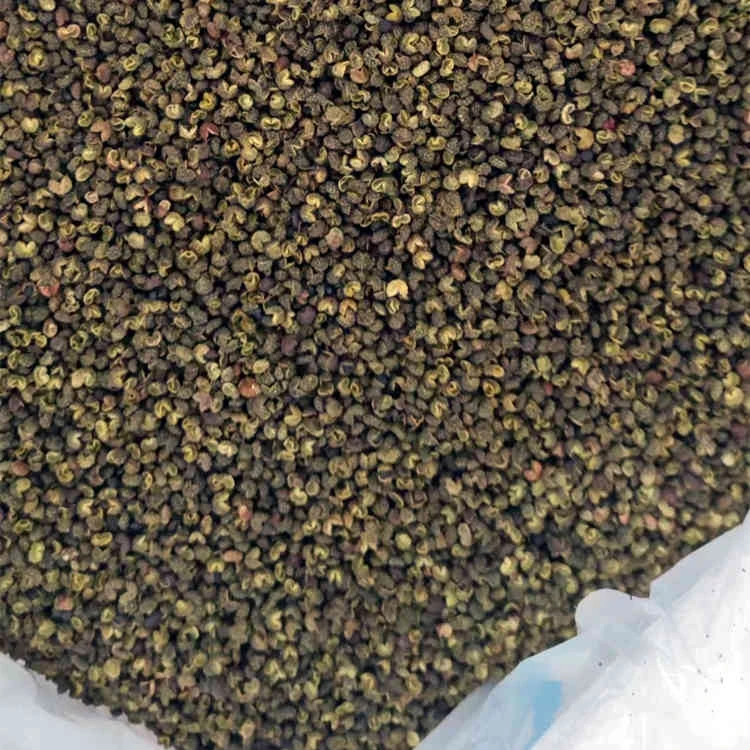
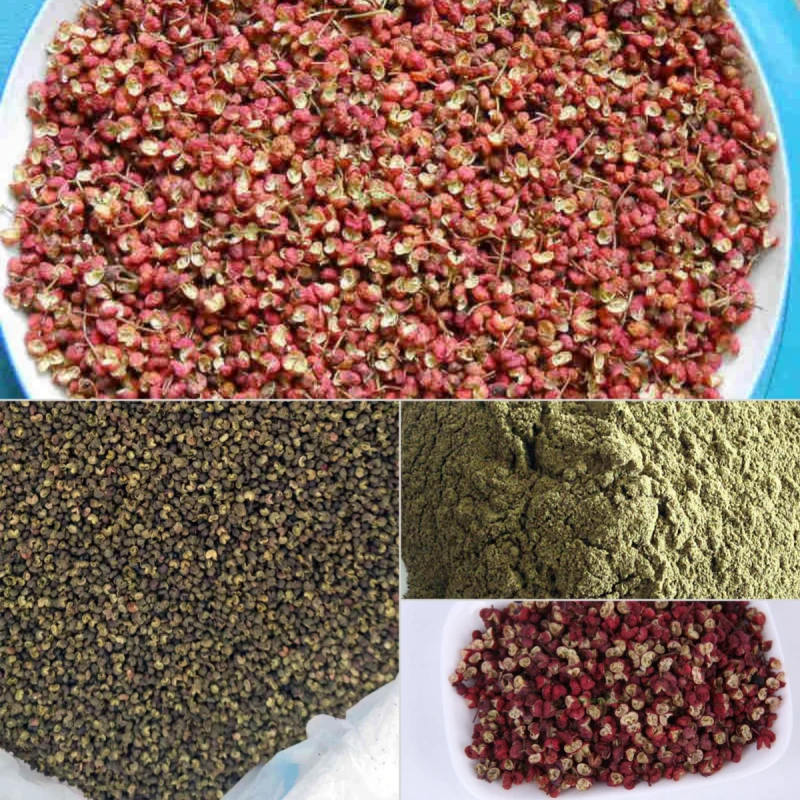
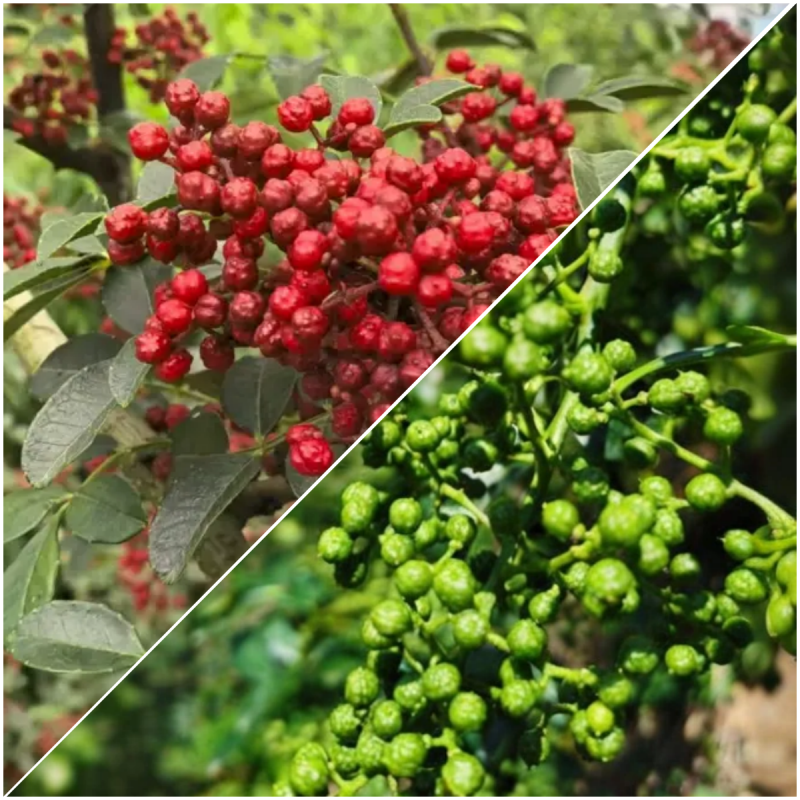
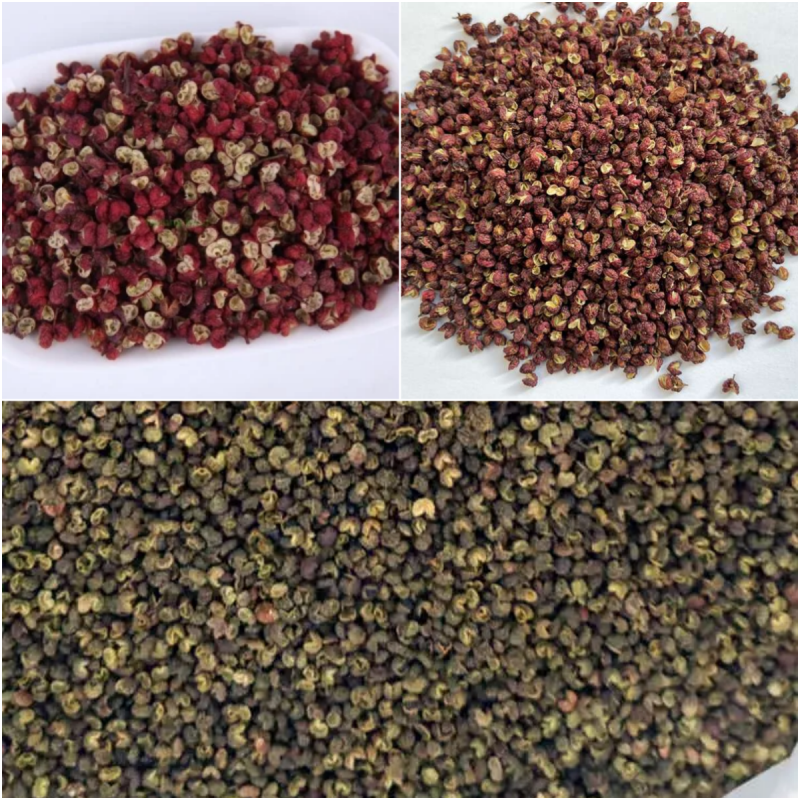
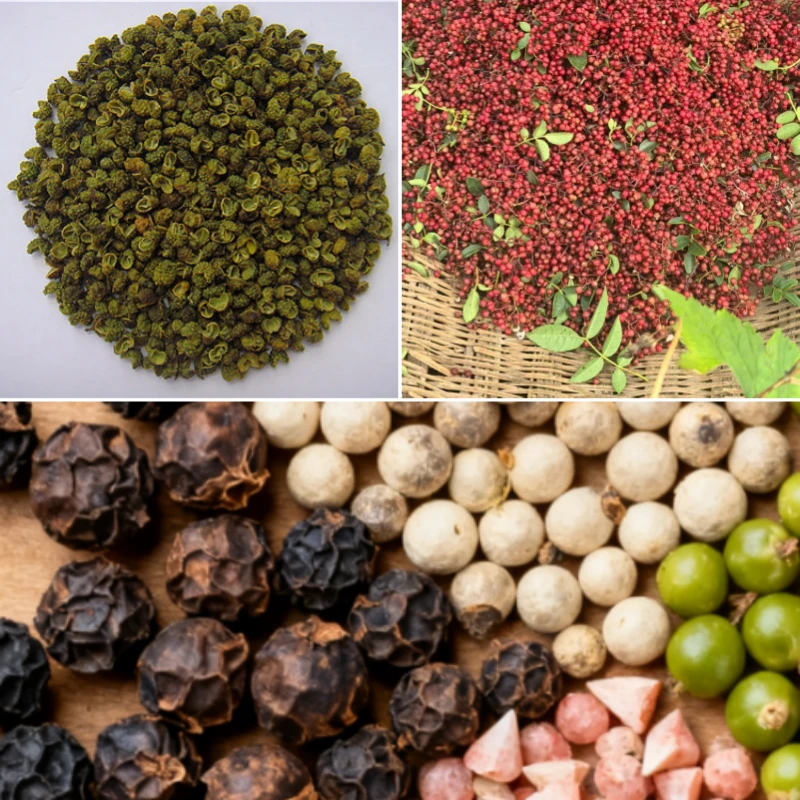
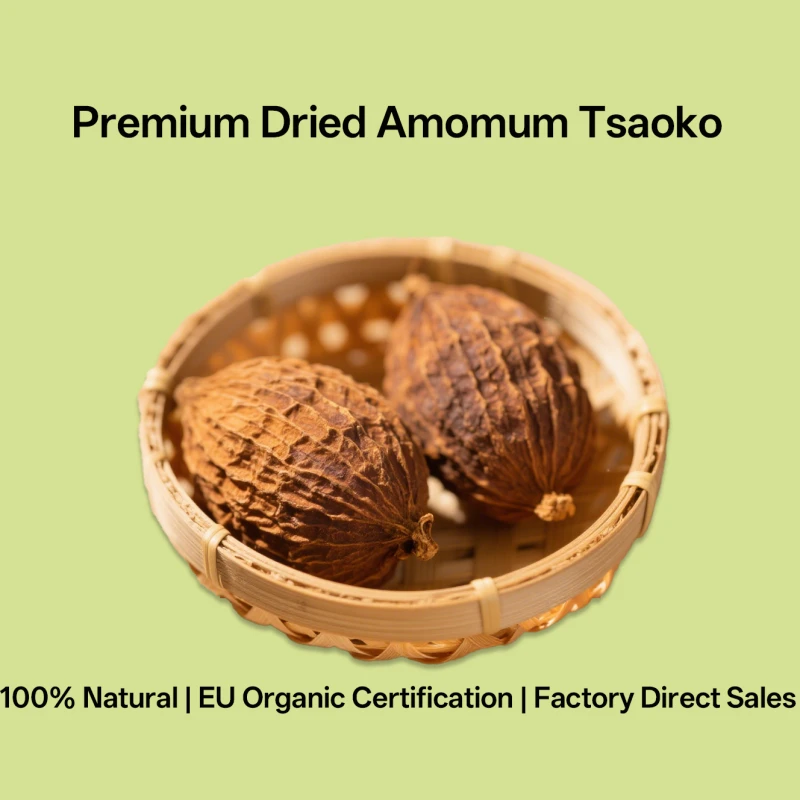

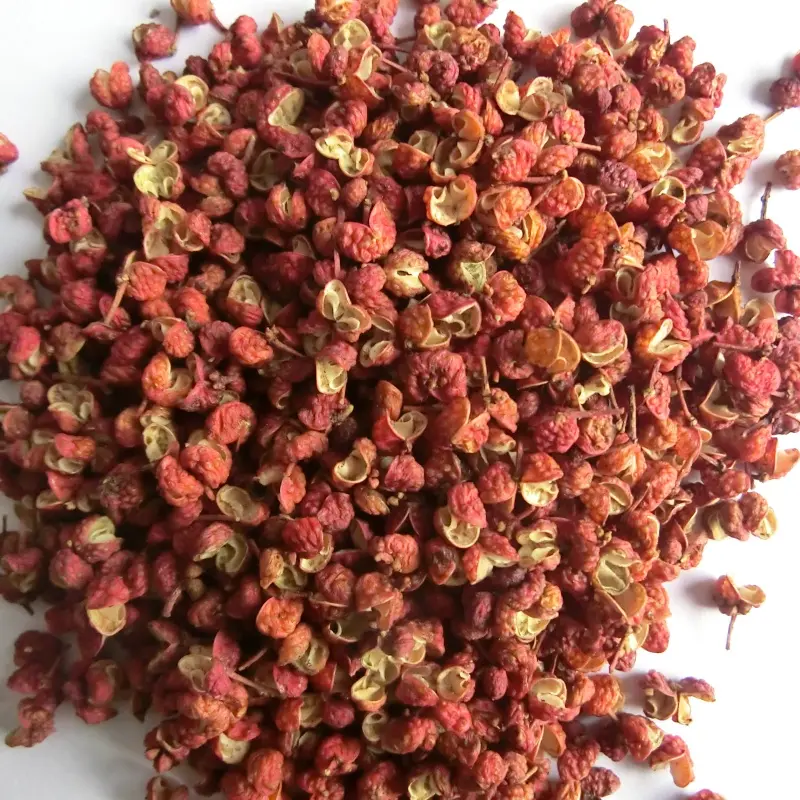
811.webp)

